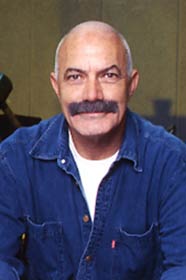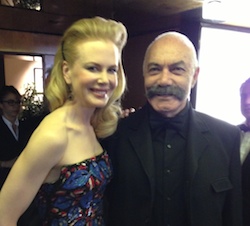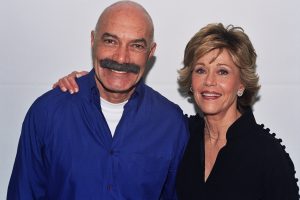




Cannes Fest Premiere–David Cronenberg’s A History of Violence is an emotionally compelling tale about the effects of violence on one nuclear family and its inevitably tragic passage from one generation to the next.
| History of Violence | |
|---|---|

Theatrical release poster
|
|
Grade: A
Without compromising his vision, Cronenberg tackles a uniquely American genre film that has the structure of a classic Western (with shootouts and showdowns) and the narrative of a morality play about the duality of human nature and the battle between good and evil.
Tautly directed and meticulously crafted, History of Violence is Cronenberg’s most accessible film in a long time, standing in contrast to his last several films, the flawed eXistenZ and the brilliant if disturbing Spider, which were little seen.
New Line will release the film, which world- premiered in Cannes, on September 30, after the Toronto Festival. Name cast of Viggo Mortensen (hot on the heels of The Lord of the Rings), Maria Bello (who made a strong impression in The Cooler), William Hurt, Ed Harris, and terrific newcomer Ashton Holmes should help market and position the film as a major fall release.
A dissection of the roots of violence as it tears apart one typical American family, History of Violence, is based on Josh Olson’s spare screenplay, loosely adapted from John Wagner and Vince Locke’s graphic novel of the same title. The novel was published six years ago by Paradox Press, the same publisher of Road to Perdition, made into a movie by Sam Mendes in 2002. Also in competition this year was Robert Rodriguez’s visually stunning but repetitive Sin City.
Of the three graphic novels-movies, History of Violence is the most dramatically powerful and resonant, perhaps because it centers on an Everyman. Unlike Road to Perdition, History of Violence doesn’t have a studied look and its story is more involving than that of Sin City.
Tom Stall (Mortensen) is living a quiet life with his lawyer wife (Bello) and their two children in the small town of Millbrook, Indiana. One night, their idyllic existence is shattered when Tom foils a vicious attempted robbery in his diner. Sensing danger, he takes action and saves his customers and friends. In self-defense, he kills two-sought-after criminals. Tom’s co-workers and family are stunned by his courage and his expert skills.
Heralded as a hero by the national media, Tom’s life is changed overnight, forcing him into the spotlight. Uncomfortable with his newfound celebrity, Tom tries to return to the normalcy of his ordinary life only to be confronted by a mysterious man (Harris), who believes Tom had wronged him in the past.
As Tom and his family fight back against this case of mistaken identity, struggling to cope with their changed reality, they are forced to confront their new identities, relationships, and other divisive issues that surface after the incident.
Olson’s small-town story has the shape of a mythic narrative that bears contemporary touches, lends it extra poignancy. With a title that’s intriguing and provocative, History of Violence should spark debates among viewers about the nature and consequences of violence.
Like father like son: A subplot describes the harassment of Tom’s teenager son in school until he, too, is forced to react with violence against his aggressors.
It’s impossible to watch History of Violence without thinking of three of the greatest masters in world cinema: Hitchcock, Fritz Lang, and Sam Peckinpah. For starters, the wrong-man scenario of a man who needs to prove his innocence to his family and the law runs through many of Hitchcock’s films, including The Wrong Man, with Henry Fonda. Cronenberg also touches on another Hitchcockian motif, middle-class complacency in the face of chaos, as in The Birds. The periodic reappearance of threat in the form of a black car parked outside Stoll’s house, represents the same menace that the birds did. Like Hitchcock, Cronenberg throws off balance a seemingly quiet family, placing it into an extreme situation and then tests the reaction of its members to the crisis.
The work of Fritz Lang, particularly his American crimers, comes into mind, since it too deals with the inevitable effects of the past on the present. In Lang’s noir movies, the characters try but can’t escape their fate, and they are often motivated to engage in extreme behavior when pushed to the limit.
Finally, the story bears resemblance to Sam Peckinpah’s Straw Dogs, which also injects violence into the life of an ordinary and peaceful scientist (Dustin Hoffman), who’s forced to dig deep into his primal instincts, when he and his wife are confronted by hoodlums.
If the surface text is familiar, and the plot seemingly simple, the subtexts are not. History of Violence contains disturbing undercurrents that should result in conflicted and powerful feelings after the movie is over. Cronenberg is not a director known for undertaking family dramas, but here, he brings his personal vision into a seemingly conventional story of a married couple with kids who are trying to live an honest life.
Among the film’s provocative issues is the notion that you can be happily married without ever knowing who your partner really is. This movie, like most of Cronenberg’s work, deals with identity, real and faked, and with role-playing. Here, Stall is struggling with identity crisis that forces him to question his very reality.
The script is more linear, straightforward, and narrative-driven than anything Cronenberg had tackled before, which means that his hardcore fans might not like it. Cronenberg, who collaborated on the text, changed the criminals’ names from Italian to Irish in order to distance them from the mafia. His movie is a Hitchcockian thriller, where an innocent man is mistaken for someone else and is drawn into a world that he’d rather not know anything about. His life and family are endangered because of his mistaken identity.
The casting is uniformly superb. The three men, Viggo Mortensen, Ed Harris, and William Hurt (who plays a Philadelphia mobster), bear strong physical resemblance being white, fair-skinned, and blue-eyed, which promotes the notion that they may represent variations of the same man, or different facets of the same men (I cannot elaborate further on Hurt’s identity without giving away the plot).
Newcomer Ashton Holmes, who was selected from 100 candidates for the role of Tom’s son, is a real discovery. Six-year old Heidi Hayes, a local discovery, plays the young daughter. Rounding out the cast are Stephen McHattie, who partnered with Greg Bryk to set the tone of the film in its shockingly violent opening scenes, which foreshadows what’s to come. Cronenberg alumnus Peter MacNeill (Crash, Rabid) plays the local sheriff.
The pacing of the film, particularly the first reel, is deliberate but thoughtful. Treating the story as a psychological drama, Cronenberg encourages the audience to pause and ask itself difficult questions about the roots and consequences of violence. Cronenberg digs deep into the narrative to find hidden layers that are related to the complicated boomerang effects of one isolated incident of violence. The situation forces the family members to ask themselves tough questions about their identities and relationships. Appearances in this film, as in most Hitchcock’s movies, are deceptive, and pople’s external and internal worlds are not what they seem to be. When things start to go wrong, Stall has to look inside himself while those closest to him wonder who he is, as he changes from a peaceful loving man to another creature.
What makes the story more interesting is that, with the exception of Tom’s wife, each character encounters violence. This includes the young girl’s nightmare early on in the film, and the son’s recurrent encounters with the school’s bullies. These encounters force each character to discover deep within themselves a dark, scary side. It’s too bad that we don’t get Edie’s approach to violence prior to the main crisis, and it’s one of the film’s shortcomings that she’s the only member with not much of a background story.
Combining the handsome looks and charismatic presence of a leading man with the acting style of a character actor, Mortensen is perfectly cast as a classic American hero, a man of action and few words. The details that have gone into his work show with the way his character moves, speaks, and dresses.
Bello and Mortensen make a very believable married couple in terms of age, tone, and conduct. Bello is revelation, giving the film’s most powerful performance, projecting a raw, vulnerable sexuality with equal measure of complexity and simplicity. Edie begins as a small-town lawyer who embraces the closeness and comfort of a small town with enthusiasm, but as the movie unfolds, she undergoes profound changes and discovers hidden aspects of herself.
Edie’s been happily married to Tom for 20 years until one day her whole existence changes abruptly; she is the ultimate supportive wife until the bottom drops out. During the crisis, Edie assume the role of “the man in the family,” with the expected masculine energy, but as the situation changes again, she is forced back into a feminine receptive and vulnerable place.
This being a Cronenberg film, it dwells on the characters’ sex lives. Edie’s strong sexual presence is a key element in the story. Tom’s act of violence provokes changes in Edie. There are two contrasting sex scenes, one lyrical, the other violent, set before and after Tom discovers hidden depths of violence within himself.
Tension begins from the moment that the first outsider walks into that diner. Tom and Edie’s relationship suffers under that strain where Tom gradually finds himself unable to deal with the situation that he himself had set up. Though the film has a clear closure, it allows for various interpretations. What will happen to the family and its members Obviously, the marriage will never be the same. For the relationship to survive, it needs to be rebuilt and retooled. Same goes for the family, which has to bear painful consequences and pay heavy price for not taking an honest look at its operations.
As the threatening Irish Mob figure, Harris is perfectly cast, bringing the requisite toughness and charisma to his character. From his scarred face to his dead eye, to his clothes, body language, and hair, Harris’ character is totally credible. Fogarty is a second-class mobster, who’s coming out to avenge a severe injustice done to him by Tom.
Emanating fear and ruthlessness, William Hurt as the crime boss is anything but a cliche figure. Like Fogarty, it’s a small role in screen time but a critical one.
A tenth grader in Millbrook High School, Jack is a loner, who feels more at home with the outcasts. Jack’s character too comes in touch with a streak inside him that he was not aware had existed.
The violence in the film is realistic and brutal, the kind of which you would see on a street fight, ungainly and bloody, the opposite of the balletically choreographed, slow-motion special-effects violence in Hollywood actioners. The violence that the main character commits is justifiable, but Cronenberg doesn’t cover up the fact that it’s nasty and unfortunate. Cronenberg shows the roots and the consequences of violence but he doesn’t linger on or glamorize it, which makes it more disturbing.
History of Violence also deals with the problem of celebrity culture. Stoll becomes a small-town hero, congratulated for committing acts of violence; his son thinks he should be on the Larry King sow. Though this is a universal issue, it’s obviously more pertinent n the U.S. where the media are excited by violence connected to celebrity.
Cronenberg is a master at creating suspense, fear, and tension, and he’s also good at showing physical action that’s abrupt and shocking in its consequences. He taps into some primal ideas and emotions, delving into darker, scary things that we can’t just walk away from. The film suggests that all humans have the potential capacity to be violent under certain circumstances.
Cronenberg shot most of the movie with 27mm lens, not the normal lens used for close-ups. It’s the most effective way to show a cohesive visual equivalent to the psychology of the characters and the dynamics of the spaces they occupy.
His creative team has collaborated closely to achieve a unique look and sense of place. Lenser Peter Suschitzky, working on his seventh film with Cronenberg, lights a film that gets progressively darker as the events unwind. The Midwest American town and Stall’s farm have a rural look with a picturesque vista and rolling hills. In the beginning, the color palette is light and airy, but it gets progressively darker and more intense. The initial mood is idyllic, a safe protective environment with no bars on the windows and no locks on the doors. In contrast, the mobster’s mansion is presented as a bad guy’s hangout, masculine with deep colors, a world removed from the bright town where Stall runs his diner. This dichotomy of light and dark reflect the main character’s emotional state, which turns from light to dark.
History of Violence works as a genre and a personal film, as a psychological thriller and family drama. It’s an intelligent film for mature audiences, and one of Cronenberg’s two or three masterpieces.
Credits
Directed by David Cronenberg
Screenplay by Josh Olson, based on A History of Violence by
John Wagner, Vince Locke
Produced by Chris Bender, J. C. Spink
Cinematography Peter Suschitzky
Edited by Ronald Sanders
Music by Howard Shore
Distributed by New Line Cinema (US)
Release dates: May 16, 2005 (Cannes)
September 23, 2005 (US)
Running time: 96 minutes
Budget $32 million
Box office $61.4 million










